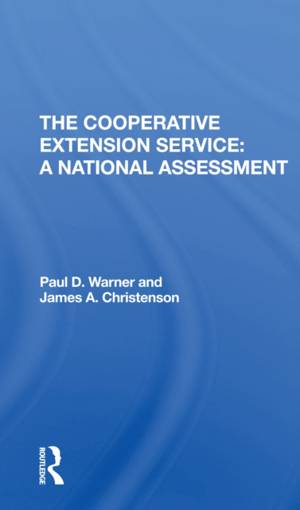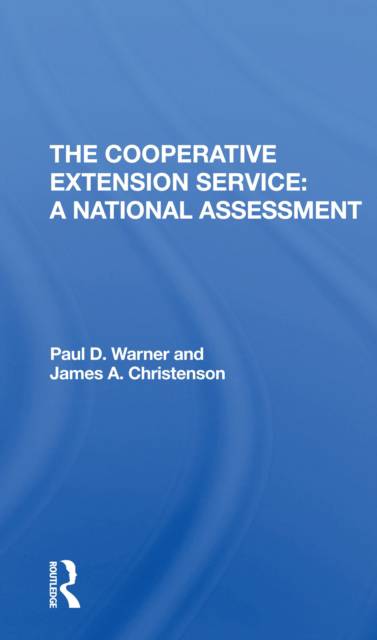
Door een staking bij bpost kan je online bestelling op dit moment iets langer onderweg zijn dan voorzien. Dringend iets nodig? Onze winkels ontvangen jou met open armen!
- Afhalen na 1 uur in een winkel met voorraad
- Gratis thuislevering in België vanaf € 30
- Ruim aanbod met 7 miljoen producten
Door een staking bij bpost kan je online bestelling op dit moment iets langer onderweg zijn dan voorzien. Dringend iets nodig? Onze winkels ontvangen jou met open armen!
- Afhalen na 1 uur in een winkel met voorraad
- Gratis thuislevering in België vanaf € 30
- Ruim aanbod met 7 miljoen producten
Zoeken
The Cooperative Extension Service
A National Assessment
Paul Warner, James A Christenson
Paperback | Engels
€ 54,45
+ 108 punten
Uitvoering
Omschrijving
The Cooperative Extension Service, a publicly supported educational agency, is continually struggling to define its proper function and purpose in our changing society. Should its mission be broadly based or narrowly focused? Should staff members be generalists or specialists? Should its clients be primarily rural or urban, farm or nonfarm? What role should Extension play in the information networks of the twenty-first century? Professors Warner and Christenson take a broad look at these and other questions concerning where the Extension Service has been, how well it is doing, and where it ought to go. Theirs is, first, the only comprehensive national survey that looks at the total Extension organization rather than at just one program area. Second, it expresses the viewpoint of Extension clients and the public, rather than that of the organization's staff; and third, it combines outside survey information with data recorded in the Extension Management Information System (EMIS) and other routine agency reports. The authors evaluate, among other things, the extent of public awareness of the agency and its four major program areas (agriculture, home economics, 4-H, and community development), determine the users and nonusers of the programs and the accessibility of programs to the general population, identify the level of satisfaction with existing programs, and outline priorities and policy issues for the future.
Specificaties
Betrokkenen
- Auteur(s):
- Uitgeverij:
Inhoud
- Aantal bladzijden:
- 195
- Taal:
- Engels
Eigenschappen
- Productcode (EAN):
- 9780367306519
- Verschijningsdatum:
- 31/05/2021
- Uitvoering:
- Paperback
- Formaat:
- Trade paperback (VS)
- Afmetingen:
- 147 mm x 229 mm
- Gewicht:
- 294 g

Alleen bij Standaard Boekhandel
+ 108 punten op je klantenkaart van Standaard Boekhandel
Beoordelingen
We publiceren alleen reviews die voldoen aan de voorwaarden voor reviews. Bekijk onze voorwaarden voor reviews.











